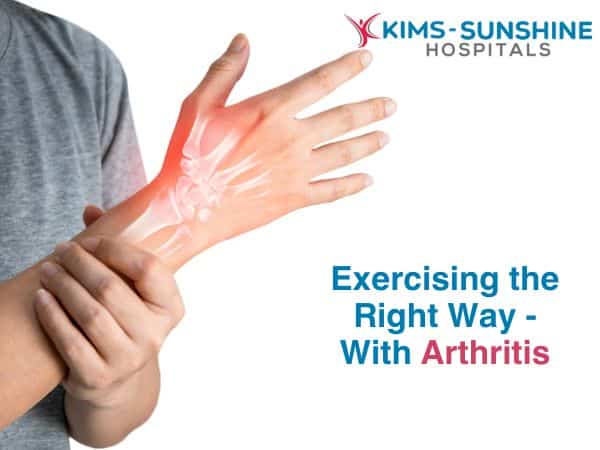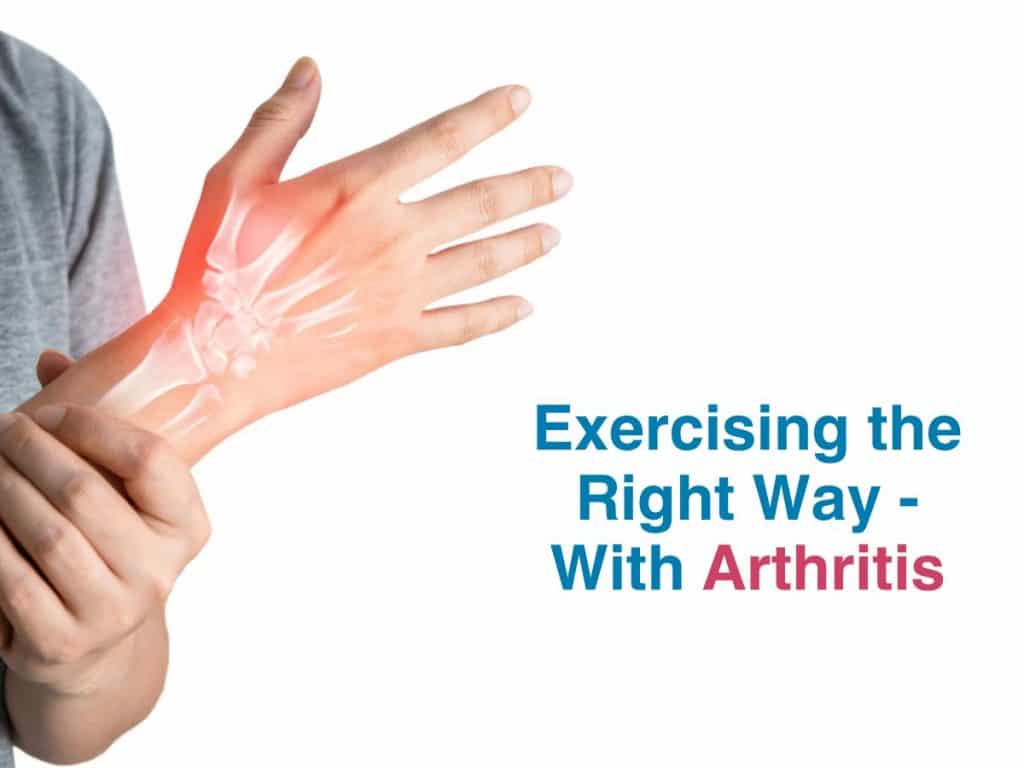
Exercising the Right Way – With Arthritis
 Introduction
Introduction
Arthritis is a joint-related medical disorder that is characterized by severe pain, swelling, redness, and a general ill-will toward any kind of movement. There has been a dramatic increase in the incidence in India – anywhere between 22-39% of the population suffers from arthritis and this number has almost doubled since the 1990s.
How to Start Exercising With Arthritis
Following an exercise routine is key but many of us wonder how to even begin. The answer is to begin, but slowly and surely. Understanding what kinds of movements are easy for your body and which ones are harder will help you stay in line and not strain yourself. The first and foremost is to identify those movements or exercises that are joint-friendly, and then do repetitions every day. A 3-5 minute routine can be done multiple times, and you can increase the number as you get more comfortable with yourself. Next, find a place that is sturdy and safe. And lastly, talk to a physical therapist or specialist to help set you up for success.
Best Low-Impact Exercises for Arthritis
The term low-impact just means that the exercises are joint-friendly and will not strain them. Some excellent additions to your routine can include a fast-paced walk, yoga, swimming, cycling on normal terrain, simple dance moves, some aerobics, etc. If you think you could get bored easily, then join dance, yoga, or aerobics classes. They will be enjoyable and keep you accountable at the same time. Water-based workouts are highly enjoyable and pain-free. The only con – you may overdo it because it is so easy. So use a timer and you should be fine.
Exercise Modifications for People with Arthritis
An extension of the above can mean- doing your stretches religiously before exercising and wearing the right gear. If you have signed up for yoga, for example, then your tutor could teach you the modified version of the pose or asana and then you can build up to the normal asana in no time with practice. Using chairs or the wall for help is another good thing.
Importance of Stretching For People with Arthritis
Do your warm-up stretches before working out because this will help your joints lubricate and improve your range of motion along with movement. But please remember to stick to “static stretches” – stretch and hold for 5 minutes only. A slow walk before you pick your pace is another good example, but this is a dynamic warm-up. Stretching after working out is also a good practice- it will help you cool off.
Best Yoga Poses for Arthritis Relief
They include the much-loved cat-cow pose, downward dog pose, the triangle pose, bridge pose, warrior pose, seated spinal twist, cobra pose, and chair pose are some excellent examples of low-impact yoga asanas that can help reduce pain and improve range of motion.
Water-Based Exercises for Arthritis
Water aerobics, walking, push-ups on the side of the pool wall, hip kickers, frog jumps or cycling in water are amazing exercises that can do wonders for you. Water-based exercises are especially advantageous because of less friction, buoyancy of water, and reduced pain, while also improving quality of life.
Strength Training Tips for Arthritis Sufferers
Having arthritis does NOT mean saying goodbye to your beloved weights. Now, you just need a few hacks to lift sensibly, and they are as follows-
1. Talk to a specialist who will help design your exercise routine for you.
2. Do not lift right away, Do proper warm-up exercises and then begin.
3. Try to work out during the day when your pain is on the lower end of the spectrum, and stiffness is not very high.
4. Do NOT lift weights if you have an actively inflamed joint. Wait till it recedes to resume lifting.
5. Pay attention to your range of motion. If you have any aggravated pain at any point of time, stop and reassess.
Conclusion
Dealing with Arthritis can be painful and challenging, but stop feeling sorry for yourself. Remember – the goal is to improve joint health and range of motion. So, stick to a routine that will not strain you excessively. Listening to your body is of utmost importance. Go to a doctor if you have any issues. A common mistake people make is to stop moving altogether- so as not to trigger any more pain. But this is counterintuitive. In fact, continuous but controlled movement is key to maintaining health. You will also improve your mood, bone health, and heart health this way.
Frequently Asked Questions

Dr. Kamalakar Rao
MBBS, M.S (Ortho), DNB (Ortho), Fellow in Arthroplasty Fellow in Arthroscopy & Sports Medicine
Consultant Orthopaedic & Trauma Surgeon






